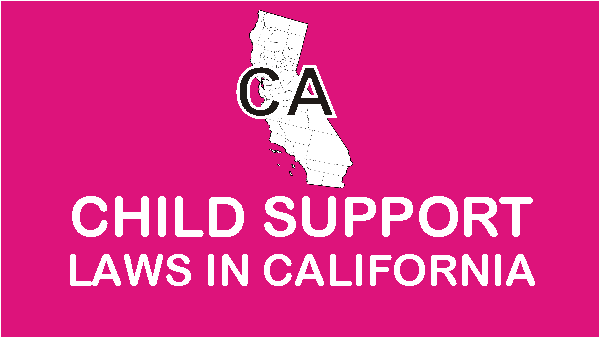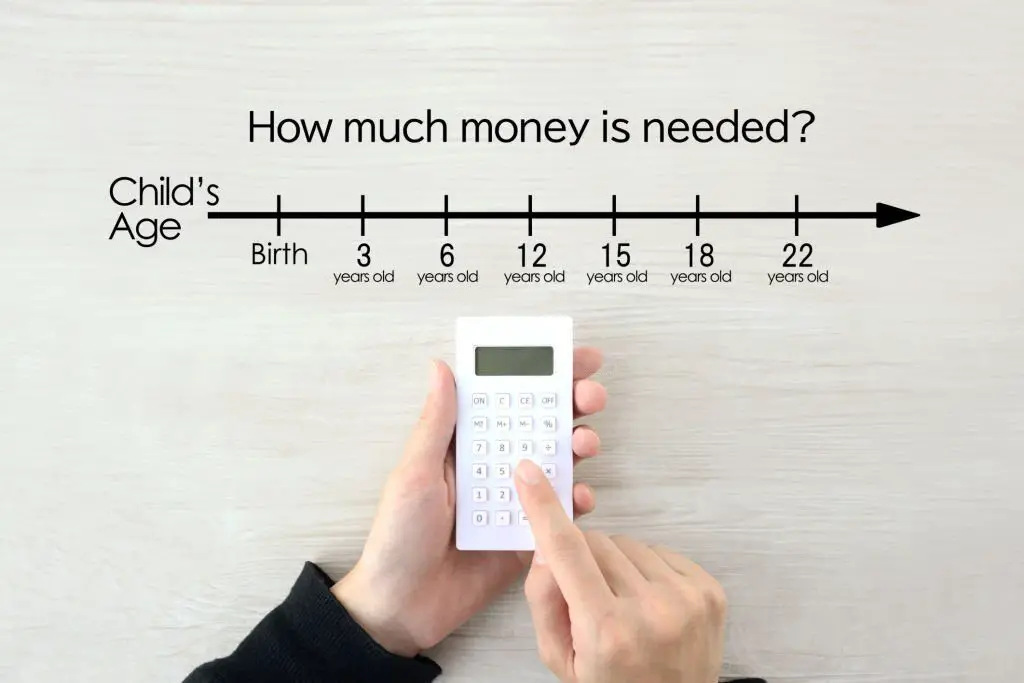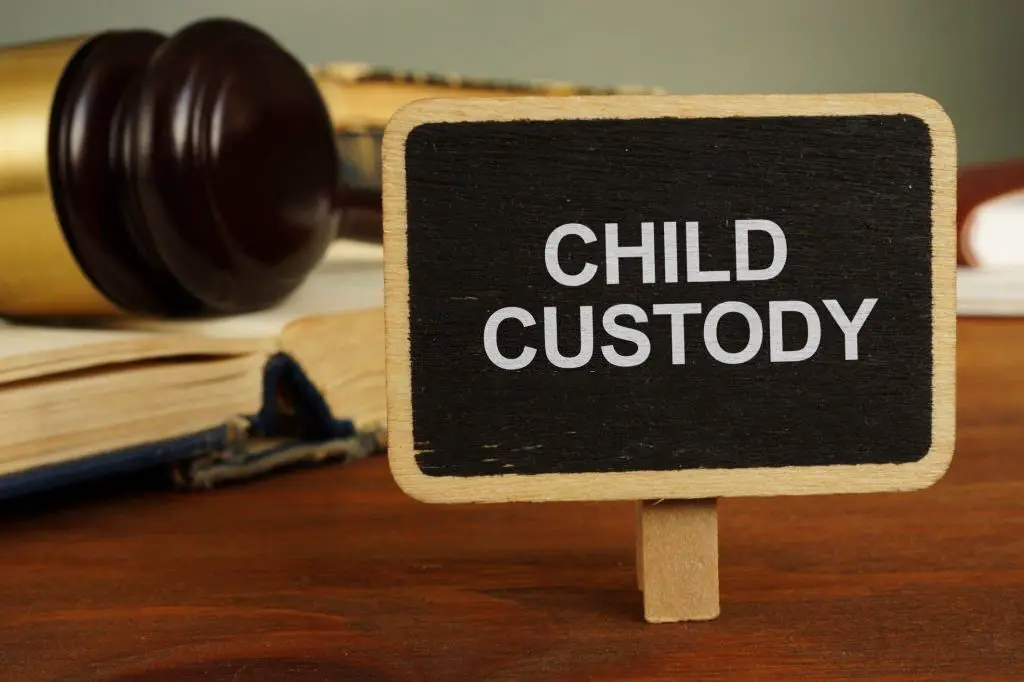
The laws governing child support in California are different from that of other states. CA child support law sets how much the child maintenance should be, and the duration of such payments, plus it seeks to guide parents in exceptional cases such as deviation, support for disabled children, and retroactive support.
As you may already know, child support (or child maintenance) is a continuous monetary payment made by a spouse to another spouse, guardian, caregiver, or the state for the upkeep of children after a divorce or separation.
The person who is required to pay child support is referred to as the “obligor,” whereas the person who is eligible to receive child maintenance (and in most cases the custodial parent) is referred to as the “obligee.”
What are CA Child Support Laws?
In the state of California, child support is governed under California Family Code 4050-4076. The fact remains that both parents must contribute to their child’s support, regardless of their marital status—whether they are married, separated, or have never been married. Depending on what’s best for the child and how capable each parent is, one parent may occasionally be more accountable for contributing than the other is.
The law mandates that children live up to the same standard of living as both of their parents.
Some are summaries of some outstanding sections of the California child support laws:
- The first and most crucial duty of a mother and father is to provide for their child.
- This responsibility is shared and is determined by each parent’s capacity, income, and time spent with the child, all in accordance with what is best for the child.
- A child should enjoy both parents’ standard of living.
- Child support may raise the standard of living of a custodial parent because it raises the living standard of the child. Therefore, child support also helps to even out the discrepancy in the standard of living between the parents.
- Child support orders in California reflect the high cost of living in the state.
- The parent who has the majority of the child’s time is presumed to have already given a large portion of his or her resources to the child. It is possible to refute this assumption.
- The goals of California’s child support laws are to minimize disputes and court cases.
All of these indicate that California’s first goal is the best interests of the child.
What does Child Support Cover in California?

Child support in CA covers a stipulated list of items
Child support only covers the child’s typical living costs. It excludes childcare, uninsured medical costs, travel costs for visitations with the noncustodial parent, and a child’s special schooling requirements. To include these additional costs in the child support order, parents must expressly request the judge to do so. If they don’t, the expenses might be split 50/50 between the parents.
The capability of the parent to provide and their income are just two examples of the many variables that make child support amounts differ from one case to the other.
What California’s child support entails is broken down as follows:
- Basic necessities like food, shelter, and clothing are considered.
- Education, including expenses for books, school supplies, clothes, and tutors
- non-insurance-covered medical treatment
- Basic Recreation
- Extracurricular activities include things like summer camp, sports and music courses, and any other regular events that take place after school.
- Childcare
- transportation services such as auto repair, gas, and insurance.
- College
Child Support When One Parent Lives Outside California
When one parent stays outside California, to enforce child support orders beyond state boundaries, each state has to have the Uniform Interstate Family Support Act (UIFSA) in place. California is no exception.
The UIFSA ensures that child support processes and procedures are consistent across states. When one spouse lives in another state where the California courts do not have authority to adjudicate or enforce orders, UIFSA reduces these bottlenecks.
As a result of the UIFSA, a child support case can be started at the child support office in the state where the parent or guardian resides. The organization will develop and implement the child support order and enlist the assistance of the other state or nation.
How is Child Maintenance Calculated In California?

Learn How Child Maintenance Calculated In California
To calculate child maintenance, California uses the Income Shares Model. The formula used by the guidelines to calculate child support is extremely complicated and takes into account a number of elements, such as the parent’s earnings, deductions, and time spent with the children. California, like all the other states, provides an online child support calculator that you can use to get a ballpark estimate of the amount that will apply in your case.
It can also be done easily using the California Child Support Calculator or Child Support Worksheet.
How California Guidelines are Applied
The CA court will use child support guidelines, which are law-based and are sometimes known simply as “Guidelines. Guidelines establish a fundamental minimum amount of child maintenance, from which the court can differ after considering a variety of considerations.
The criteria are believed to be rational, and a decision of support that conforms to the guidelines is believed to be in the best interest of the child,” according to the guidelines.
In order to calculate child support, you must:
- gross income of both parents
- how much time each child spends with each of their parents
- any tax deductions for which the parents are eligible, such as mortgage interest
- mandatory payroll deductions for things like union dues, health insurance, and pensions
- both parents’ expenses for child care.
The calculator will produce an amount once you enter these fundamental information.
How to Calculate Child Support
Here is the complicated formula California employs to determine child support:
CS is equal to K (HN – H% (TN)).
The letters stand for the following:
CS is the amount of child support. When you’ve entered all of your data, the formula will calculate this. One youngster will receive the full amount. In the event that a couple has more kids, they must multiply the CS amount by a legal formula based on the number of kids.
K is the entire amount of both parents’ combined income that will be used to calculate child support. Depending on the parents’ combined incomes and the length of time the parent with the higher income spends with the kid, a certain percentage of that income must be set aside for child support.
HN means high net, which refers to the higher-earning parent’s net monthly disposable income.
H% is the approximate percentage of time that the higher-earning parent has or will have custody primarily as their primary physical caregiver when compared to the other parent. (For instance, the children might live with that parent 25% of the time, while the other parent does so 75% of the time.) H percent is equal to the average of the approximate percentages of time the parent with the higher income spends with each child when parents have varying time-sharing agreements for various children.
TN stands for combined total net monthly disposable income of both parents
This complexity is why almost everyone uses a calculator, including attorneys and judges! However, the wider the economic gap between both the parents the less the time that parent stays with the children, and the higher child support that parent will be required to pay.
California Child Support Calculator or Worksheet: Which to Use?

How to determine Net Income for CA child support
While a child support calculator can be used to estimate child support, it is not a guarantee of the final amount of child maintenance that the judge will order. A child support worksheet is a form used by the CA courts (or negotiating spouses) to approximate the basic child support obligation of the parents.
Regardless of which approach you use, spouses can decide on a child support sum and amend the worksheet accordingly to ensure it accurately reflects their agreement. Both establish a presumption duty to pay child support.
The final decision on the amount of child support is made by the administrative law judge, administrator, or court.
Gross Income Included in Calculating Child Maintenance
For child support calculation purposes, gross income includes:
- all wages and salary, including commissions, military pay, tips, overtime, and bonuses
- self-employment income
- interest and dividends
- net rental income from property the parent owns
Even jobless parents are likely to have some sources of income, like:
- severance pay
- unemployment benefits
- retirement benefits
- veterans’ benefits
- disability benefits, or
- workers’ compensation awards.
A CA family court judge may also allocate an income value to parents who do not currently have income-earning employment (like a second house). If a jobless parent inherits assets that can be sold, for instance, the judge may include the property’s market value as a part of such parent’s income.
Where parents willfully go unemployed or underemployed in order to avoid paying child support, judges may infer (assign) income based on what they are supposed to be earning.
Is Medical Health Insurance Part of Child Support in California?

Medical Health Insurance and Child Support in California
Health insurance is included under almost every child support order in California, although it is not a part of child support. In actuality, the parent who must provide insurance could not be the one who must pay child support. Depending on the situation.
It’s crucial to understand that health insurance covers dental and optical care. These alternatives must be offered if they may be purchased for a fair price.
Factors California Courts Consider Before Ordering Maintenance
The following factors must be considered by the court when determining whether California Family Code applies:
- The age of the child and needs; the parents’ ability to assist
- Financial resources available to the child
- For a set period of time, you have custody and access to a child.
- An increase or decrease in the obligee’s earnings or income due to the obligee’s property and assets
- Child care expenses incurred by either parent in order to keep a job
- any other children under the care of either party
- Any other children under the care of either party
- What kind of alimony or spousal maintenance is being paid or received;
- Obligor or obligee receives an automobile, house, or other benefits from his or her employer or business entity.
- The parties or the child’s special education, health-care, or other expenses
- The cost of traveling to obtain custody of and access to a child.
- Cash flow from any estate and assets, including real estate, personal property, and business property, can be positive or negative.
How to Challenge or Modify Child Support Order
A parent (or the LCSA if they are involved in the case) must show that there’s been a substantial change in circumstances in order to apply to alter child support. A California court may consider an alteration if:
- either one or both parents’ income has changed;
- one parent’s employment has been lost;
- a parent has served time behind bars;
- a child from a different relationship was born to one parent;
- The amount of time the youngster in this scenario spends with each parent has significantly changed;
- It’s possible that the child’s needs have changed and that the expense of child care, health care, or education has increased (or decreased);
- Any of the variables used to determine child support has undergone adjustments. the agreement has changed.
If t both parents (and, if applicable, the LCSA) are able to agree on a new child support amount, they could put their agreement in writing as a settlement and submit it to the court for signing by a judge so that it will become a new order.
However, if both parents are unable to come to an agreement, one parent (or the LCSA if it is engaged in the case) must submit a motion to the court asking for a change if the parents are unable to come to an agreement.
Steps for Changing Existing Child Support Order in CA
Step 1 – Fill out your court forms.
Forms FL-300PDF; and FL-150PDF (Income and Expense Declaration) or Form FL-155PDF (a Financial Statement (Simplified)).
To be sure which of FL-150PDF or FL-155PDF to use, read Form DV-570PDF
Step 2 – Have your forms reviewed.
Request that the family law facilitator in your court checks your documentation. Before you proceed with your case, the facilitator can ensure that you filled it out correctly. Additionally, you can consult a child support lawyer to examine your documents.
Step 3 – Make at least 2 copies of all your forms.
You will receive a copy, and the other parent of your child will also receive a copy. The court will use the original. Make 3 copies if the LCSA is engaged in your case.
Step 4 – File your forms with the court clerk.
Submit your paperwork to the court clerk. The clerk will give the duplicates to you, stamped “Filed,” while keeping the original. There could be a filing cost. You can request a fee waiver if you are unable to pay the cost. You won’t be charged a filing fee if the LCSA is involved in your case and the sole problem is supported.
Step 5 – Get your court date.
Your court date will be provided by the clerk and noted on Form FL-300. A date for mediation may be provided if you are also requesting custody orders.
Step 6 – Serve your papers to the other parent (and the LCSA if involved)
Serve the other parent and the LCSA (if applicable) with a copy of your documents, a blank Responsive Declaration to Request for Order (Form FL-320PDF), and a blank Income and Expense Declaration (Form FL-150PDF) by having someone at least 18 (NOT YOU) do so.
You can use the mail to notify the other parent and, if applicable, the LCSA. A minimum of 16 court days plus 5 days for mailing must pass before the hearing in order for it to be completed. Also keep in mind that someone else, not you, must mail the documents.
Step 7 – File your proof of service.
Make the person doing the serving fill out a Proof of Service by Mail (Form FL-335PDF) for the opposing parent (and another for the LCSA if involved in the case). The Proof of Service (or Proofs of Service) must then be filed with the court. It is crucial that your server correctly completes the Proof (or Proofs) of Service. If at all feasible, ask your family law facilitator to check that this paperwork was properly completed.
Your server must complete a Proof of Personal Service (Form FL-330) if the papers were served personally.
Step 8 – Go to your court hearing.
On the stipulated court hearing date, take a copy of all of your papers as well as your Proof (or Proofs) of Service to your court appearance.
Steps to Collect Child Support in California

Steps to Collect Child Support in California
Getting a child support order in place is only half the struggle in California. You’ll also have to collect the money itself. A noncustodial parent is responsible for paying the full amount of child maintenance per month as imposed by the court. Here are the steps for getting child support in CA
1. Open a Child Support Case
Fill out the online application or go to your neighborhood child support office to start a case in California.
After submitting an application, the local office will get in touch with the applicant to help with the legal process of obtaining a child support order.
2. Locate the Other Parent
To begin the child maintenance procedure in CA, the child support services (CSS) office will use the information provided by the applying parent, as well as information gathered from other sources, to try to locate the other parent.
3. File a Summons & Complaint
The parent who is being required to pay child support will receive a summons and complaint packet after the case is initiated. It legally means you have been officially notified that you are a party to a child support case.
You only have 30 days to reply; otherwise, the judge could impose a “default” child support judgment without taking into account your financial condition.
4. Establish Legal Parentage
If you have received a summons and complaint but do not think you are legally responsible for the kid or children for whom child support is being demanded, you have the right to request a proof, and you will be offered free assistance,. This is either evidence that the parents were lawfully wed at the time of the child’s birth or that parentage can be determined through DNA testing, which is more than 99 percent accurate.
5. Create a “Stipulated Agreement”
Some regional organizations provide “Family Meetings,” which let both parties meet with a child support caseworker, either jointly or separately, as a way to avoid going to court. The “Stipulated Agreement,” which is submitted to the court, is created when both parents sign a paper and agree on a dollar figure.
Not all child support offices might provide this option.
6. Enforce the Support Order
A court date will be scheduled if there is no Specified Agreement. A suitable amount of child support will be determined after the judge considers the financial facts and other pertinent information provided by both parties.
The court will take that expense into account when determining the amount of child support ordered if either parent is able to obtain medical insurance.
7. Obtain or Make Payments
Payments are arranged to start after a child support order is established. There are numerous ways to pay, however, if the parent who must pay works, their employer will be responsible for deducting the necessary sum from their wages. This is required by Federal law for child support orders and is not a sign that the money will not be paid.
In the event of a dispute, the parent paying support may feel secure knowing that all payments are documented.
8. Enforce the Order (If paying parent reneges)
California Child Support Services Office, Number and Login Portal
California Department of Child Support Services (DCSS)
Address: 3666 Kearny Villa Rd, San Diego, CA 92123, United States
Phone: +1 866-901-3212
Website: Here
Child Support Back Pay California
In specific circumstances, the California family court may impose retroactive child support. A parent cannot, however, ask for child support that dates back to the child’s birth. Child support payments can only be made back three years if they are retroactive.
When a final decision for support was delayed or if a temporary child support order was not obtained at the start of the action, CA courts may order retroactive child support. The retroactive payments, however, only apply to the time between the petition’s submission and the present. There is a three-year maximum for the payouts.
The retroactive period begins on the date the parent was served if the petition for retroactive support was not delivered to the parent within 90 days of the petition’s filing. The judge may shorten the retroactive period if the parent made a conscious effort to avoid serving the child.
In accordance with section 685.010 of the California Code of Civil Procedure, if you owe child support, you must not only make regular payments of the support you owe but additionally pay 10 percent interest annually on the arrears.
Additionally, if you fall into arrears by more than 30 days, you may be subject to a 6 to 72 percent penalty on late sums under California Family Code 4722.
Consequences of not paying child support orders in California
The person who has been ordered to pay support is in contempt of court if the court determines that they have the means to do so but are purposely refusing to do so. The person may face jail time if they are found to be in contempt of court. Due to the terrible repercussions, this enforcement method is typically only utilized when all other options have failed.
Other consequences of not paying child support include:
- Civil (“capias”) warrants are typically only issued in situations where the custodial parent has filed a contempt of court claim.
- Criminal warrants: in the event that a child support issue is taken up by the federal or state government.
- Mandatory wage deductions:
- The noncustodial parent’s salary may be withheld for insurance.
- Any personal property or real estate may be the subject of a property lien.
- Denial of tax refund
- Loss of license: The California DMV has the authority to revoke any state-issued professional license, hunting license, or boating license.
- Passport revocation
If you feel the arrears are being demanded wrongly, you can learn how to get child support arrears dismissed HERE.
How to Pay Child Maintenance in California
In California, parents can pay child support in a variety of ways, as long as your order doesn’t state otherwise:
- by debit or credit card,
- mail,
- check
- bank transfer
- direct deposit
- income withholding, or
- auto-draft from a bank account.
How to Check your Child Support Payment History in CA

How to Check Child Support Payment History in CA
When there are disagreements between the parents and a need to confirm how much money is owed, child support payment records are extremely beneficial.
Here are ways to check for your child support payment history in CA:
1. Call the toll-free automated phone system Customer Connect every day of the week..
Dial toll-free at 1-866-901-3212. (within the U.S.)
Call 1-408-273-0073 (outside the U.S.)
Make a free TTY call at 1-866-399-4096.
2. Utilize the self-service California Child Support Customer Connect platform (available 24/7).
To register or log in, you must have your Participant ID (PAR ID). This can be found in the majority of letters provided by California Child Support Services to case participants, typically at the top of the page. (Usage instructions here)
When Does Child Support End in California?
Child support in California is paid until the child turns 18 years old (or 19 if they are still in high school full time, living at home, and cannot support themselves). Other conditions include:
- Emancipation occurs before the child turns 18.
- The child becomes an adult child and gets married.
- The child enlists in the military.
- The child dies before they turn 18.
- The court terminates support or custody.
Nevertheless, if the judge determines that the child is disabled (physically or mentally), the child can receive support perpetually.
What is the Average Child Support Payment in CA?
The approximate monthly child support payment for one child in California is $430. However, this is just an illustration and in no way should be used as a yardstick for gauging how frequently a person should be able to pay for child care.

Understanding Custody Rights of a Child in California
How Does CA Child Support Work if one Parent Has no Job?
In California, child support is not immediately terminated if a parent loses their source of income. Even if they are unemployed, parents must still pay their child support obligations. If a parent fails to make child support payments, arrears will continue to accumulate until the judge modifies the order.
If it determines that they are unwilling to work or to be fully employed far as it is in the best interests of the child who are the focus of the child support order, the court will ascribe (or attribute) income to the parent.
Is Child Support Tax Deductible in California?
NO. In California, child support payments are neither taxable to the recipient nor tax-deductible by the payer as stated by the IRS. Don’t include child support payments when calculating your gross income to see whether you have to file a tax return.
However, either parent may be eligible for a dependency exemption per child. If the parents can’t agree on who receives the exemption, the judge will set out the terms in a court order.
Getting a Skilled California Child Support Attorney
If you are involved in a family law matter in California, you may have a lot more questions than answers at this moment. You are not alone; Correspondence with members has shown that using the services of specialized child support attorneys saves a lot of hassles and most importantly, ensures you come out as a winner for you and your kid.
If you need to fight your child maintenance cause in CA with confidence, then you’ll need attorneys that are both empathetic and strong.
Luckily, we have compiled a database of these expert child support lawyers and made them available for the convenience of our members. You can reach them at the click of a button for legal advice and representation on child maintenance.
Click Here to Get our Free California Alimony recommendation.
California Resource
- California Child Adoption Guidelines
- California Child Custody and Visitation Guidelines
- California Child Support Guidelines
- California Divorce Guidelines
- California Marital Property Guidelines
- California Spousal Support Guidelines
- How to Check California Child Support Payment History
Child Support Laws in all 50 States
A - Alabama | Alaska | Arizona | Arkansas
C - California | Colorado | Connecticut
D-H - Delaware | Florida | Georgia | Hawaii
I - Idaho | Illinois | Indiana | Iowa
K-L - Kansas | Kentucky | Louisiana
M - Maine | Maryland | Massachusetts | Michigan | Minnesota | Mississippi | Missouri | Montana
N - Nebraska | Nevada | New Hampshire | New Jersey | New Mexico | New York | North Carolina | North Dakota
O - Ohio | Oklahoma | Oregon
P-S - Pennsylvania | Rhode Island | South Carolina | South Dakota
T-U - Tennessee | Texas | Utah
V-W - Vermont | Virginia | Washington DC | Washington State | West Virginia | Wisconsin | Wyoming





